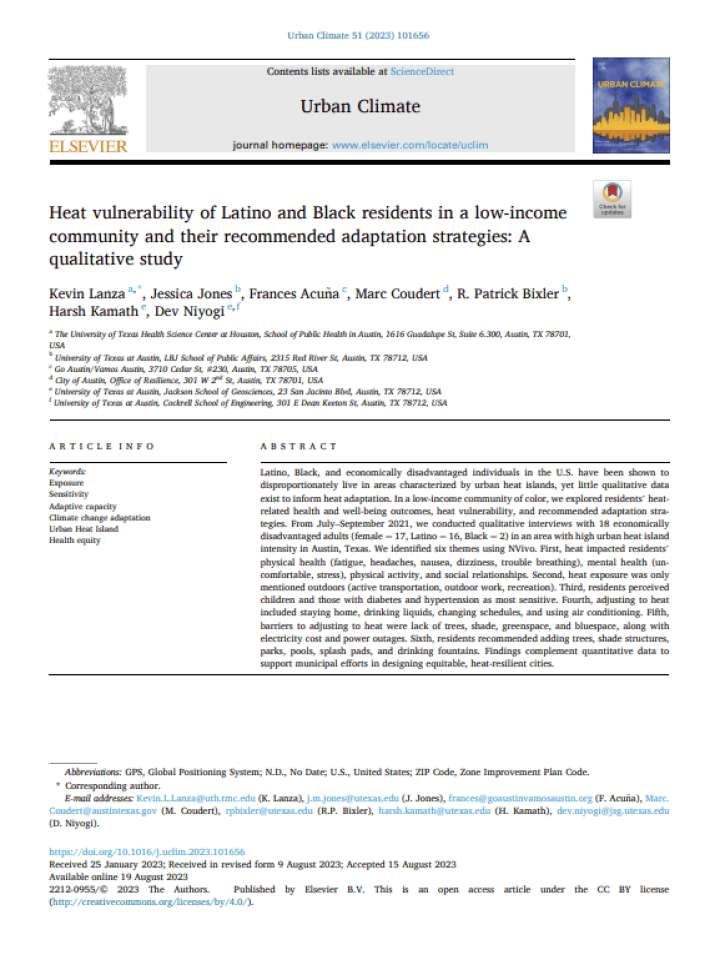Heat vulnerability of Latino and Black residents in a low-income community and their recommended adaptation strategies: A qualitative study
This paper explored residents' heat-related health and well-being outcomes, heat vulnerability, and recommended adaptation strategies in a low-income community of color. Latino, Black, and economically disadvantaged individuals in the U.S. have been shown to disproportionately live in areas characterized by urban heat islands, yet little qualitative data exist to inform heat adaptation. From July–September 2021, the researchers conducted qualitative interviews with 18 economically disadvantaged adults (female = 17, Latino = 16, Black = 2) in an area with high urban heat island intensity in Austin, Texas. They identified six themes using NVivo.
- First, heat impacted residents' physical health (fatigue, headaches, nausea, dizziness, trouble breathing), mental health (uncomfortable, stress), physical activity, and social relationships.
- Second, heat exposure was only mentioned outdoors (active transportation, outdoor work, recreation).
- Third, residents perceived children and those with diabetes and hypertension as most sensitive.
- Fourth, adjusting to heat included staying home, drinking liquids, changing schedules, and using air conditioning.
- Fifth, barriers to adjusting to heat were lack of trees, shade, greenspace, and bluespace, along with electricity cost and power outages.
- Sixth, residents recommended adding trees, shade structures, parks, pools, splash pads, and drinking fountains.
Findings complement quantitative data to support municipal efforts in designing equitable, heat-resilient cities.
Explore further
